SINE SURFACE

| next surface | previous surface | 2D curves | 3D curves | surfaces | fractals | polyhedra |
SINE SURFACE

| Surface considered and named by Gray in 1997, but studied before? |
| Cartesian parametrization: Cartesian equation: Sextic surface. |
| The sine surface is a union of ellipses, like the animation opposite shows, and this in 3 different ways (sections by the planes parallel to the coordinate planes).
It is a surface with the symmetries of the cube, hence that can be seen as a generalized Goursat surface. |
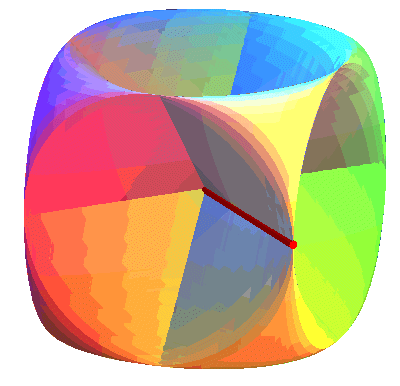 |
| Disregarding the 3 segment lines of self-intersection, the sine surface is homeomorphic to the torus (it therefore provides an immersion of it). But, as opposed to the classic geometric torus for which the inside face is hidden, the two faces of this orientable surface have as many visible and invisible parts; and a rotation of Note that if the surface is oriented, then it only has the symmetries of the tetrahedron; for example, a symmetry with respect to xOy changes the orientation. |

The two faces of the sine surface. |
| View of the two surfaces |
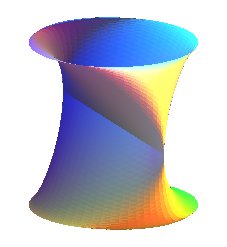 |
 |
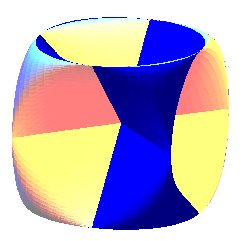 |
| View of the 4 surfaces |
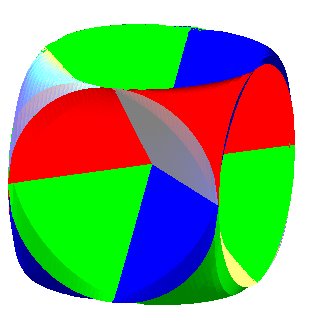 |
| A polyhedral version of the sine surface is the octahemioctahedron, which has the same segment lines of self-intersection. | 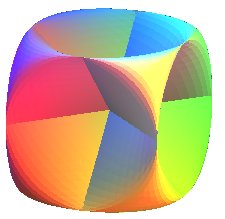 |
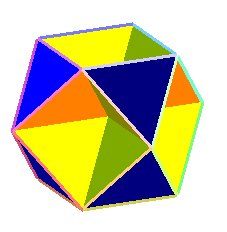 |
| The surface which, by symmetry, could be called the cosine surface: |
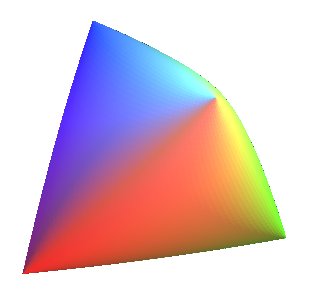 |
|
Sine surface engraved by Patrice Jeener |
 |
| next surface | previous surface | 2D curves | 3D curves | surfaces | fractals | polyhedra |
© Robert FERRÉOL
2017